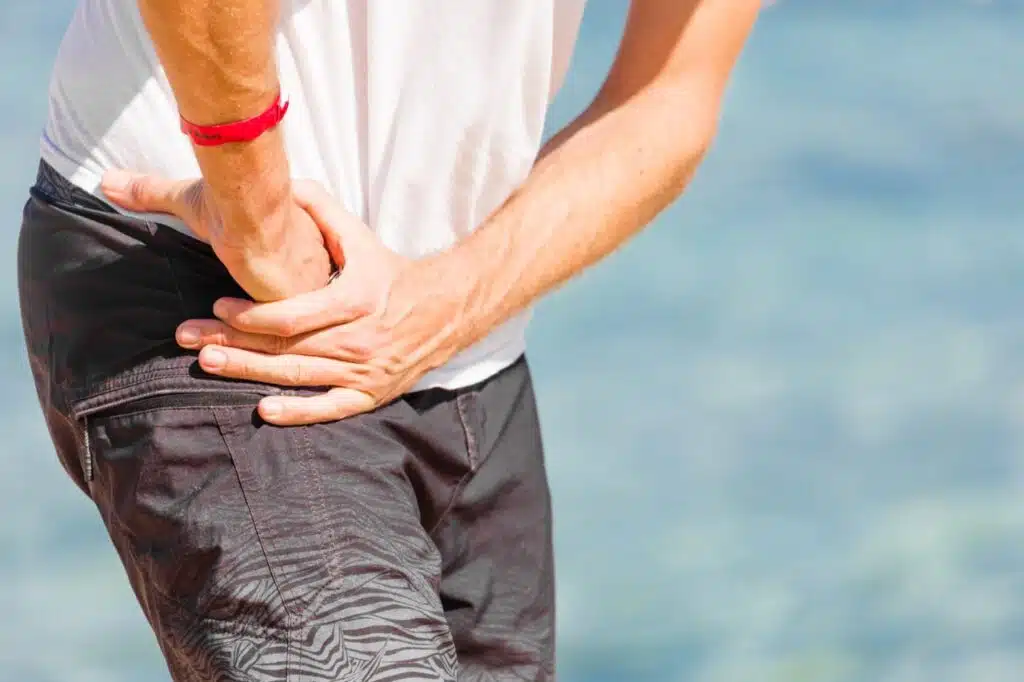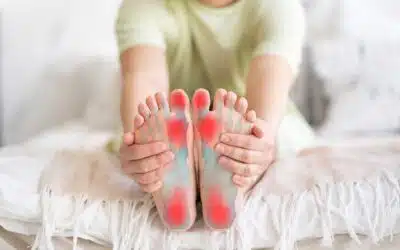Hip pain is a common complaint that affects individuals of all ages, significantly impacting quality of life and mobility. In Vancouver, a city known for its active lifestyle, ranging from hiking the Grouse Grind to cycling around Stanley Park, staying mobile is a crucial aspect of life for its residents. However, the prevalence of hip pain can hinder this active way of living, prompting a need for effective solutions and treatments.
Understanding the Impact of Hip Pain
The causes of hip pain are varied, encompassing acute injuries, chronic conditions such as arthritis, and other medical issues that can deteriorate one’s mobility and comfort. The impact of hip pain extends beyond physical discomfort; it can lead to a reduction in activity levels, affect mental health by increasing stress and anxiety, and diminish the overall quality of life.
Recognizing the signs and symptoms of hip pain early is essential for timely intervention. With a range of diagnostic approaches and treatment modalities available, individuals suffering from hip pain have several options to explore. The journey to recovery and pain management is multifaceted, from physical therapy and chiropractic care to lifestyle adjustments and medications.
This guide aims to provide a comprehensive overview of hip pain, including its causes, symptoms, diagnostic methods, and treatment options available in Vancouver. By understanding the nature of hip pain and the available expert solutions, individuals can take informed steps toward managing their condition and reclaiming mobility and quality of life.
Causes of Hip Pain
Hip pain arises from a variety of sources, each with its unique origins and mechanisms. Understanding these causes is the first step toward effective management and treatment. Here are the most common culprits behind hip pain.
Injuries
Injuries are a prevalent cause of hip pain, often resulting from physical activities, accidents, or falls. These can range from acute injuries like fractures and sprains to overuse injuries such as tendinitis and bursitis. Sports-related activities, especially those requiring repetitive movements or impact, can significantly stress the hip joint and surrounding tissues, leading to pain and discomfort.
Arthritis
Arthritis is among the leading causes of hip pain, particularly in older adults. Osteoarthritis, which results from wear and tear of the joint, causes the cartilage that cushions the hip bones to break down, leading to pain, stiffness, and reduced mobility. Rheumatoid arthritis, an autoimmune condition, can also affect the hip by attacking the lining of the joint, causing inflammation and discomfort.
Other Medical Conditions
Several other medical conditions can lead to hip pain, including:
- Hip Fractures: Common in older adults due to osteoporosis, hip fractures can cause severe pain and immobility.
- Labral Tear: The labrum, a ring of cartilage surrounding the outer rim of the hip joint socket, can tear, leading to pain and stiffness.
- Sciatica: This condition involves pain that radiates down the sciatic nerve from the lower back to the hips and legs, often affecting one side of the body.
- Infection: Infections in the bone or joint, such as septic arthritis, can cause hip pain and systemic symptoms like fever.
Lifestyle and Environmental Factors
Certain lifestyle choices and environmental factors can also contribute to hip pain. Obesity puts extra stress on the hip joints, exacerbating wear and tear. Poor posture and improper lifting techniques can strain the hip over time, while lack of exercise can weaken the muscles that support the hip, making it more susceptible to injury and pain.
With Vancouver’s diverse range of outdoor activities and environmental conditions, understanding these causes is particularly relevant. The city’s residents often engage in skiing, hiking, and other sports that can pose risks for hip injuries and conditions. The wet and cold climate may also exacerbate symptoms for those with arthritis or other chronic conditions affecting the hip.

By identifying the underlying cause of hip pain, healthcare professionals can tailor treatment strategies to address the specific condition, offering relief and improved mobility to those affected.
Signs and Symptoms of Hip Pain
Recognizing the signs and symptoms of hip pain is crucial for early diagnosis and treatment. Hip pain can manifest in various ways, depending on the underlying cause, and may affect not only the hip itself but also surrounding areas. Here are key symptoms associated with hip pain that warrant attention.
Localized Pain and Discomfort
- Pain in the Hip Joint: This is the most obvious symptom, characterized by discomfort inside the hip joint or on the outside hip area.
- Groin Pain: Many hip problems cause pain in the groin area, which can be mistaken for other conditions.
- Buttock or Thigh Pain: Pain may also radiate to the buttocks or down the thigh, indicating issues with the hip or surrounding nerves.
Mobility Issues
- Stiffness: Difficulty moving the hip joint, especially after sitting for long periods or in the morning, can be a sign of hip pain.
- Reduced Range of Motion: There may be a decreased ability to move the hip in certain directions without pain.
- Limping: Pain may lead to compensating behaviours, such as limping, to avoid putting weight on the affected hip.
Other Physical Symptoms
- Swelling and Tenderness: The hip area may become swollen or tender to the touch due to inflammation or injury.
- Warmth or Redness: These can be signs of infection or inflammation within the hip joint.
- Popping or Crunching Noises: Sounds coming from the hip joint during movement may indicate cartilage damage or other joint problems.
Systemic Symptoms
In some cases, hip pain may be accompanied by systemic symptoms that indicate a more widespread issue:
- Fever: This could suggest an infection in the hip joint or surrounding tissues.
- Unexplained Weight Loss: Along with hip pain, this could signal a more serious underlying health condition.
- Fatigue or General Malaise: These could accompany conditions like rheumatoid arthritis that affect the whole body.
In Vancouver’s active community, where regular engagement in physical activities is common, being aware of these symptoms is particularly important. Early recognition allows for prompt medical consultation, ensuring that individuals can return to their preferred activities with minimal disruption. Whether it’s hiking, cycling, or simply enjoying a walk along the Seawall, maintaining hip health is vital for a vibrant, active lifestyle in this beautiful city.
If you experience persistent hip pain or any of the symptoms mentioned, seeking professional medical advice is crucial. Early diagnosis and intervention can prevent further complications and pave the way for effective treatment and recovery.
Diagnostic Approaches to Hip Pain
Identifying the underlying cause of hip pain is essential for determining the most effective treatment plan. Healthcare professionals utilize various diagnostic approaches to assess and accurately diagnose hip pain. Here’s an overview of the common methods used.
Medical History and Physical Examination
The diagnostic process begins with a thorough medical history and physical examination. During this initial assessment, healthcare providers will ask about the nature of the pain, its onset, activities that exacerbate or relieve it, and any history of injuries or underlying conditions. A physical examination helps identify the pain’s location, range of motion limitations, and any signs of injury or inflammation in and around the hip joint.
Imaging Tests
Imaging tests play a crucial role in diagnosing hip pain, offering detailed views of the bones, joints, and soft tissues.
- X-rays: These are often the first imaging tests performed, helping to detect fractures, bone spurs, or signs of arthritis in the hip.
- Magnetic Resonance Imaging (MRI): MRI scans provide detailed images of soft tissues, including muscles, ligaments, tendons, and cartilage. This is particularly useful for diagnosing soft tissue injuries, such as labral tears, or conditions like avascular necrosis.
- Computed Tomography (CT) Scan: A CT scan combines X-ray images taken from different angles to create cross-sectional images of the hip. It’s useful for examining complex fractures and planning surgical procedures.
- Ultrasound: This imaging method can visualize soft tissue structures around the hip in real-time, aiding in the diagnosis of tendonitis or bursitis.
Lab Tests
In cases where an infection, arthritis, or other systemic conditions are suspected, blood tests or fluid analyses may be ordered. These tests can help detect markers of inflammation, infection, or autoimmune disorders that could contribute to hip pain.
Specialized Tests
Depending on the suspected cause of hip pain, additional tests may be recommended:
- Bone Density Test: A bone density test can assess the strength of the bones around the hip for individuals at risk of osteoporosis.
- Gait Analysis: This involves observing the patient’s walk to identify abnormal movements or compensations that may contribute to hip pain.
With Vancouver’s wealth of medical resources and specialists, patients have access to these advanced diagnostic tools. By leveraging these technologies and methodologies, healthcare professionals can pinpoint the exact cause of hip pain, ensuring that treatment is tailored to the individual’s specific needs. This personalized approach to diagnosis and treatment is key to effectively managing hip pain and restoring mobility and quality of life for those affected.
Treatment Modalities for Hip Pain
Once the cause of hip pain is diagnosed, a comprehensive treatment plan can be developed to address the patient’s specific needs. In Vancouver, a city that prides itself on a comprehensive approach to health and wellness, individuals suffering from hip pain have access to a wide range of treatment options. These modalities aim to relieve pain, restore function, and prevent further injury. Here’s an overview of the main treatment approaches.

Physical Therapy
Physical therapy is often the cornerstone of hip pain treatment, focusing on strengthening the muscles around the hip, improving flexibility, and increasing range of motion. Therapists may use techniques such as manual therapy, exercises, and stretches tailored to the individual’s condition. For those in Vancouver, the natural surroundings and public parks provide a beautiful backdrop for prescribed outdoor exercises and activities that complement physiotherapy.
Chiropractic Care
Chiropractic care can be particularly beneficial for individuals with hip pain stemming from alignment issues or musculoskeletal imbalances. Chiropractors use manual adjustments, mobilizations, soft tissue therapy and other techniques to improve joint mobility, alleviate pain, and enhance function. This non-invasive approach is popular in Vancouver, where many seek comprehensive and natural health solutions.
Shockwave Therapy
Shockwave therapy is a non-invasive treatment that uses acoustic waves to promote healing and reduce pain in affected areas, including the hip. It stimulates the body’s natural healing processes, increases blood flow, and reduces inflammation. Shockwave therapy is particularly effective for treating tendinopathies, bursitis, and other soft tissue disorders. It’s a preferred option for patients seeking alternatives to more invasive treatments or those looking to accelerate recovery.
Medications
Medications are often used to manage pain and inflammation associated with hip pain. These may include over-the-counter pain relievers, such as ibuprofen and acetaminophen, as well as prescription medications like anti-inflammatories or corticosteroids. In some cases, especially for conditions like rheumatoid arthritis, disease-modifying antirheumatic drugs (DMARDs) or biologics may be prescribed to target underlying inflammation.
Lifestyle Adjustments
Making lifestyle adjustments can also play a significant role in managing hip pain. This includes maintaining a healthy weight to reduce stress on the hip joints, incorporating low-impact exercises such as swimming or cycling, and using ergonomic furniture to support proper posture. Vancouver’s community resources, including nutrition counselling and fitness classes designed for all ages and abilities, support these lifestyle adjustments.
Surgical Options
Surgery may be considered for severe cases of hip pain that have not responded to conservative treatments. The most common surgical procedures include:
- Hip Arthroscopy: A minimally invasive surgery used to diagnose and treat various hip problems, including labral tears and impingement.
- Hip Replacement Surgery: In cases of severe arthritis or hip damage, a total hip replacement can restore mobility and relieve pain. This involves replacing the damaged hip joint with an artificial one.
Alternative Therapies
Many in Vancouver also explore alternative therapies such as acupuncture, massage therapy, and yoga, which can complement traditional treatments by reducing pain, improving flexibility, and promoting overall well-being.
Preventive Measures
Part of the treatment plan may include strategies for preventing future hip pain, such as posture correction, ergonomic adjustments at work, and education on safe exercise practices.
By combining these treatment modalities, healthcare professionals can offer a comprehensive and personalized approach to managing hip pain. The goal is to alleviate pain and address the root cause of the issue, ensuring a return to active, pain-free living for their patients.
Preventive Measures for Hip Pain
Preventing hip pain is key to maintaining mobility, especially in a city like Vancouver, where the lifestyle often includes outdoor activities, sports, and adventure. Implementing preventive measures can significantly reduce the risk of developing hip pain. Here are essential strategies to help safeguard your hips from injury and discomfort.
Maintain a Healthy Weight
Excess weight can increase stress on the hip joints, leading to wear and tear over time. Maintaining a healthy weight through a balanced diet and regular exercise can help prevent hip pain and other related health issues.
Strengthen and Stabilize
Strengthening the muscles around the hips, core, and legs helps to stabilize the hip joints and prevent injuries. Exercises such as squats, lunges, and leg lifts can be beneficial, but it’s important to perform them with proper form to avoid strain. Vancouver’s community centers and gyms offer various classes and resources to help build a suitable exercise regimen.
Stay Active, But Be Mindful
Regular physical activity is crucial for keeping the hip joints flexible and strong. However, listening to your body and avoiding overexertion is equally important. Incorporate low-impact exercises like swimming, cycling, or walking, which provide cardiovascular benefits without putting too much stress on the hips.
Practice Good Posture
Good posture while sitting and standing can prevent unnecessary strain on the hip joints. When sitting, especially for prolonged periods, keep your feet flat on the floor and your hips and knees at a 90-degree angle. Consider ergonomic chairs or standing desks to promote healthier posture.
Wear Proper Footwear
Supportive shoes can significantly impact hip health by ensuring proper alignment and balance. Choose footwear that provides good support, especially if you have flat feet or other conditions that can affect your gait and, subsequently, your hips.
Warm-Up and Cool Down
Before engaging in any physical activity, take the time to warm up your muscles with light exercises or stretches. This preparation can prevent injuries by making your muscles more flexible. Similarly, cooling down after activity helps to relax your muscles and reduce the risk of stiffness or pain.
Learn Safe Movement Techniques
Whether you’re lifting heavy objects, playing sports, or performing daily activities, using safe and proper techniques can protect your hips from strain. Bend at your knees, not your waist, and avoid twisting your hips excessively.
Regular Check-Ups
Regular visits to a healthcare provider can help catch potential issues before they become problematic. This is especially important for individuals with a history of hip pain or conditions that may predispose them to hip issues.
In a vibrant city like Vancouver, where the opportunities for physical activity are plentiful, taking proactive steps to prevent hip pain is essential for enjoying all that the city has to offer. By incorporating these preventive measures into your daily routine, you can help ensure that your hips remain healthy and pain-free, allowing you to lead an active and fulfilling lifestyle.
When to Seek Professional Help for Hip Pain
While some minor hip pain can be managed with rest and over-the-counter treatments, there are certain signs and symptoms that indicate the need for professional medical evaluation. Recognizing when to seek help is crucial for preventing further complications and ensuring effective treatment. Here’s a guide to understanding when hip pain warrants a visit to a healthcare professional.

Persistent or Worsening Pain
If your hip pain persists for more than a few days or worsens despite home care measures such as rest, ice, and over-the-counter pain relievers, it’s time to consult a healthcare provider. Persistent pain could indicate an underlying condition that requires medical attention.
Intense Pain
Sudden, intense hip pain should be evaluated promptly, especially if it’s severe enough to limit your ability to walk or bear weight on the affected leg. This could be a sign of a serious condition, such as a fracture or severe arthritis.
Swelling, Redness, or Warmth
Visible swelling, redness, or a feeling of warmth around the hip or groin area can be signs of inflammation or infection. These symptoms require immediate medical evaluation to determine the cause and initiate appropriate treatment.
Night Pain or Pain at Rest
Pain that disturbs your sleep or occurs even when at rest is particularly concerning. This type of pain may indicate a more serious underlying issue, such as advanced arthritis or a bone infection.
Limited Range of Motion
Suppose you notice a decrease in your ability to move your hip, such as difficulty putting on shoes or socks or a reduced range of motion during daily activities. In that case, it’s important to seek medical advice. This could be a sign of arthritis or a hip impingement.
Signs of Infection
If hip pain is accompanied by fever, chills, or other signs of infection, seek medical attention immediately. Infections in the hip joint or surrounding tissues can lead to serious complications if not treated promptly.
No Improvement with Treatment
If you have been following a treatment plan for hip pain without noticeable improvement, or if symptoms recur frequently, a healthcare professional can reassess your condition and adjust your treatment strategy as needed.
Whether it’s consulting a family physician, visiting an urgent care center, or seeking a referral to a specialist, the key is not to delay. Early intervention can prevent further damage and help ensure a quicker return to your active lifestyle.
Understanding when to seek professional help is crucial to managing hip pain effectively. By paying attention to your body and responding to signs that indicate a need for medical evaluation, you can take proactive steps toward maintaining your health and well-being.
Conclusion
Addressing hip pain is not just about alleviating immediate discomfort; it’s about preserving mobility, independence, and quality of life. In a city like Vancouver, where the natural environment invites an active lifestyle, maintaining hip health is essential for enjoying everything from coastal walks to mountain hikes and the daily activities that define our lives.
Understanding the causes and symptoms of hip pain, exploring diagnostic options, and pursuing appropriate treatment modalities are critical steps toward recovery. However, the journey doesn’t stop there. Implementing preventive measures and recognizing when to seek professional help is equally important in maintaining long-term hip health.
The impact of hip pain extends beyond physical limitations; it can affect mental well-being and overall life satisfaction. Therefore, taking proactive steps to address hip issues improves physical health and enhances mental and emotional resilience. The comprehensive approach to managing hip pain—encompassing treatment, prevention, and timely intervention—empowers individuals to lead fuller, more active lives.
In conclusion, prioritizing hip health is crucial to your overall well-being. By understanding the importance of addressing hip pain, adopting preventive measures, and seeking professional guidance when necessary, you can ensure that hip pain does not impede your ability to enjoy life to the fullest. Let’s embrace the journey toward better hip health, armed with knowledge, support, and the motivation to stay active and pain-free.
References:
- American Academy of Orthopaedic Surgeons (AAOS) Clinical Practice Guidelines on the Management of Osteoarthritis of the Hip: These guidelines provide comprehensive information on the evidence-based management of osteoarthritis of the hip, including diagnostic, treatment, and postoperative procedures.
- Main page: AAOS Clinical Practice Guidelines
- Direct link to guidelines: https://www.orthoguidelines.org
- Physiopedia on Hip Osteoarthritis: Offers a detailed overview of hip osteoarthritis, including physiotherapy management, exercise therapy, and education on self-management. It emphasizes the role of physiotherapy in improving strength, mobility, and reducing pain through patient-specific exercise programs.
- RACGP Guideline for the Management of Knee and Hip Osteoarthritis: Provides recommendations on non-pharmacological and pharmacological interventions for managing knee and hip osteoarthritis, based on the best available evidence.
- NICE Guidelines on Hip Conditions: The National Institute for Health and Care Excellence (NICE) in the UK offers guidelines and quality standards for the management of hip conditions, including osteoarthritis.
- NICE Guidance on Osteoarthritis: Care and Management: This guideline provides recommendations on the care and management of adults with osteoarthritis, focusing on diagnosis, assessment, and management strategies.






0 Comments